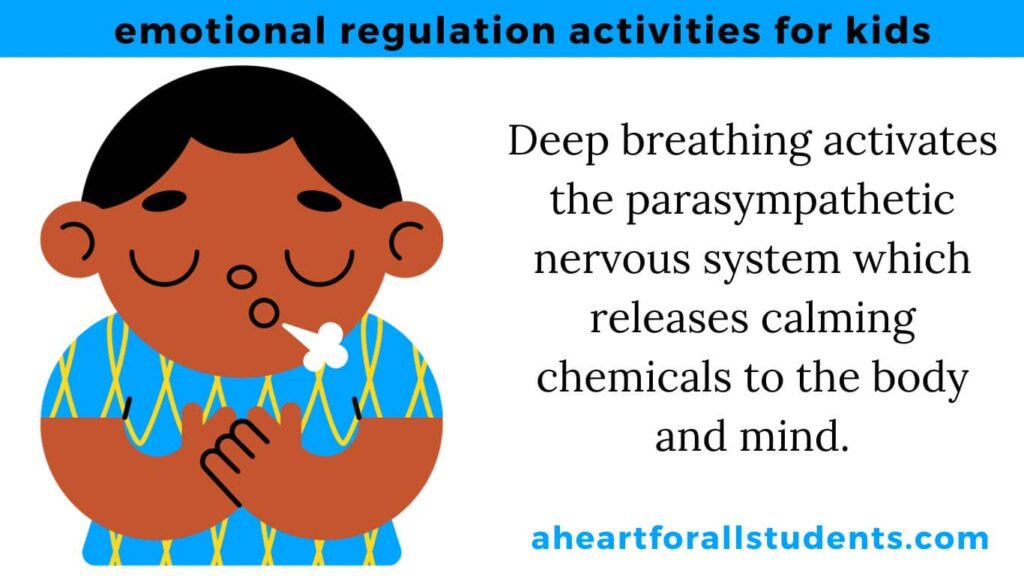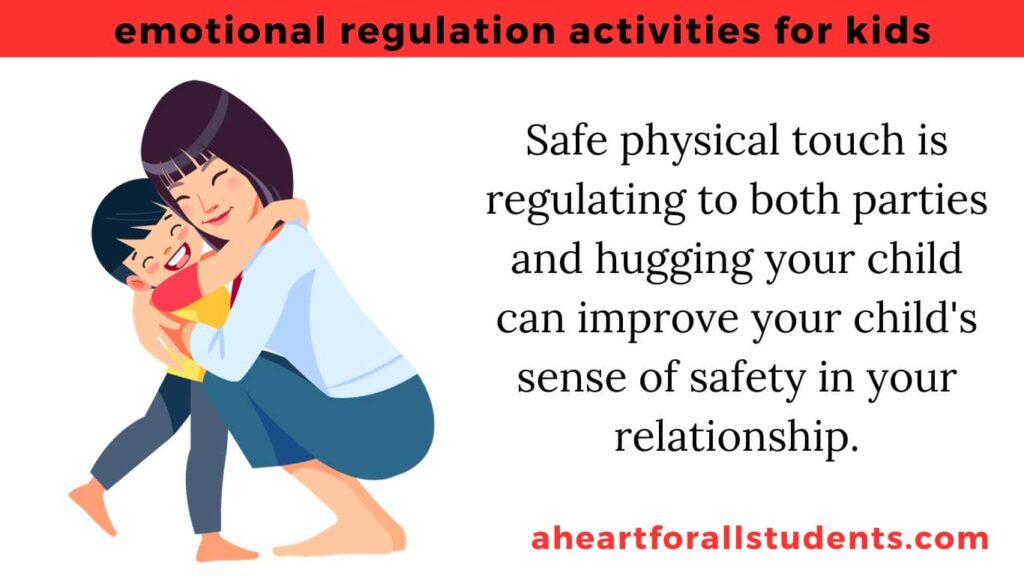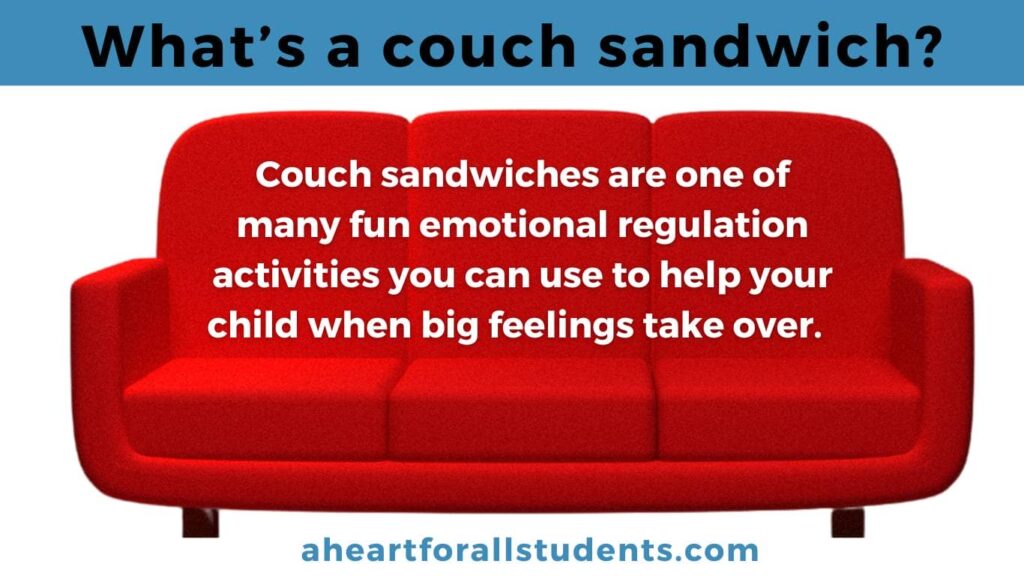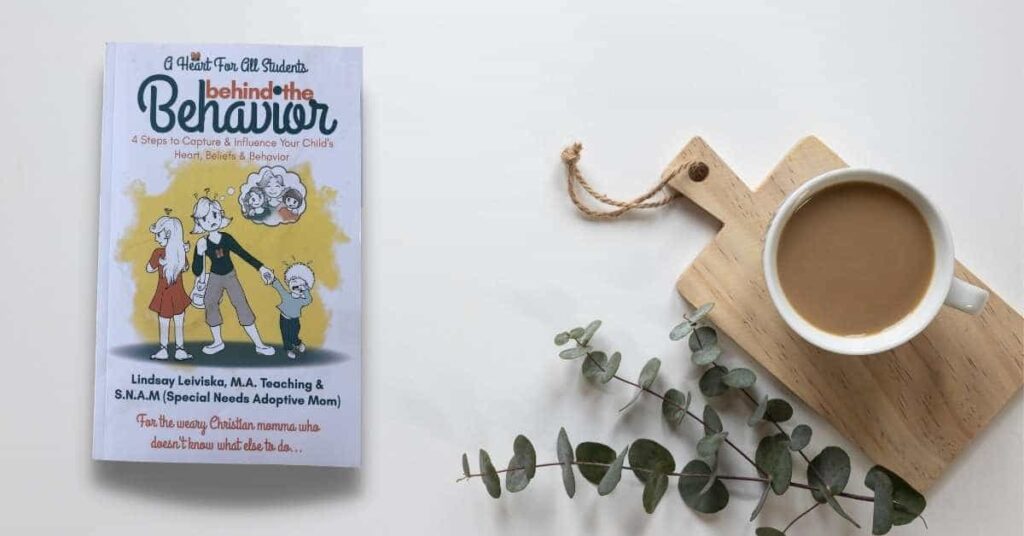Looking for effective emotional regulation activities for kids? Perhaps you’re hoping to help your child manage big emotions in a healthy way. Maybe like many young children, your child is beginning to experience new and different situations more frequently.
Along with these new life experiences come new thoughts and feelings that are not easy to navigate.
In the face of difficult situations and emotions, children often experience emotional dysregulation. Dysregulation is when intense emotions are poorly handled or “regulated”.
Because of this, we must equip our children with an arsenal of self-regulation skills, tools, and strategies.

Rather than reacting in the moment (we both know how well that goes), it’s a good idea to prepare. So, today I’m sharing 47 emotional regulation activities for kids of all ages.
What is Emotional Regulation?
Emotional regulation is the term used to describe the ability to regulate or manage emotional reactions healthily and appropriately.
It should be noted that healthy emotional regulation develops over time. Because of this, we should not be surprised when children behave poorly in response to their strong emotions.
Developing strong emotional regulation skills is closely related to a child’s emotional intelligence. According to Child Mind Institute, emotional intelligence “refers to the ability to perceive, control, and evaluate emotions.”
In other words, the ability to emotionally regulate in a healthy way is related to a child’s growing emotional intelligence.
And both of these areas, emotional regulation, and emotional intelligence can be explicitly taught to children through what’s called social-emotional learning.
All three of these terms are highly dependent on Executive Functioning.
What is Executive Functioning?
If you are raising a child with ADHD or Autism, you’re likely already familiar with the term Executive Functioning because your child is likely struggling with it.
However, to get us on the same page, let’s have a quick review.
Executive functioning refers to a set of skills that develop over time. Executive function skills include a variety of critical skills including the following.
- Following directions
- Sustained attention
- Planning & foresight
- Organization
- Follow-through (perseverance)
- Impulse control
- Ability to self-regulate appropriately
- Mental flexibility
- Working Memory
- and Emotional Regulation
Interestingly, the area of the brain responsible for these skills is referred to as the “executive center” of the brain.
Many experts compare the executive function center of the brain to the conductor of an orchestra.
Without the conductor regulating the timing and intensity of the string, percussion, and brass sections of the orchestra, the sound they produce will not sound harmonious.
Without a strong executive center of the brain, both adults and children will struggle with a variety of executive function skills. In this case, appropriate self-regulation of different emotions.

Pre-Frontal Cortex and Expectations
Diving in even further, the executive center of the brain is housed in the pre-frontal cortex area of the brain. This part of the brain is the very LAST part to develop.
To put it in perspective, the pre-frontal cortex does NOT develop until the 3rd decade of life. Yes! You read that correctly.
The pre-frontal cortex which is responsible for controlling emotional responses does not fully develop until our kids are approximately 25 years of age. Poor emotional self-regulation should be expected from younger children and, quite frankly, older kids as well.
I mean, let’s be honest. We both know many adults who still struggle with poor behavior in response to difficult emotions, right?
This is why you must re-examine your expectations of your children’s behavior. Doing so will better set up both you and your children for healthy expectations.
Healthy Expectations for Behavior
Specifically, healthy expectations allow you more compassion for your child. That compassion will better equip you to help your child develop emotional regulation skills.
On the other hand, when your child experiences your compassion and support, their expectations of themselves become healthier.
This will allow them to have compassion for themselves in the face of their own mistakes.
This, in turn, can improve mental health outcomes that will serve their emotional state in their everyday life.
ADHD, Autism & Social Emotional Learning
Inherent to ADHD and Autism are challenges with executive functioning.
ADHD is not a lack of attention at all. On the contrary, one of the major problems with the ADHD brain is too much attention… to everything.
Specifically, ADHD is better explained as challenges with the regulation of attention and emotions.
Because 50-70% of Autistic people have a co-occurring ADHD diagnosis, it’s not surprising that Autistic children struggle with similar emotional regulation challenges.
For obvious reasons, if you have a child with ADHD or Autism, make it a priority to provide your child with additional social-emotional learning opportunities.

This post may contain affiliate links. As an Amazon Associate, I may earn a nominal fee from qualifying purchases. Thank you for your support. See my disclosure policy for more info.
47 Emotional Regulation Activities for Kids
Below you’ll find 47 emotional regulation strategies for kids. These activities will help your child develop healthy coping strategies in response to a wide range of emotions.
Teaching kids better ways to handle their various emotions is one of the most important things we can do for them as parents.
So, let’s do this, Friend.
1. Deep Breathing
When kids experience difficult or threatening situations, the fight-or-flight response of the sympathetic nervous system is activated.
- The fight-or-flight response leads to a hyperarousal state where the brain tells the body to release adrenaline (epinephrine).
- That adrenaline floods the bloodstream,
- Increases heart rate which then sends more blood flow and oxygen to the larger muscles.
Why does this happen? This happens automatically so they can protect themselves by flight (running), fighting, or freezing.
This is an automatic response of the autonomic nervous system.
Calm the Nervous System
Encouraging your child to take long, slow deep breaths is an excellent coping strategy.
It helps in response to both the intense emotions AND the resulting physiological sensations.
Taking deep breaths activates the alternate part of your child’s nervous system.
Specifically, deep breathing activates the parasympathetic nervous system which releases calming chemicals to the body and mind.
2. Box Breathing
Box breathing is a strategy in which you inhale and exhale in a specific way. Guide your child by modeling the process and then doing it with them.
- Inhale for 4 seconds.
- Hold for 4 seconds.
- Release for 4 seconds.
- Hold for 4 seconds.
- Repeat.
Imagine a box in your mind and go around each side of the box for each step.

3. Blow Bubbles
Blowing bubbles is a great first step in deep breathing activities for younger children. They will most likely associate blowing bubbles as a fun game.
Ultimately, they’ll experience the benefit of deep breathing while having a great time. Ultimately, this will help them work through hard emotions to more positive emotions.
This activity is also a great tool to help older children who are learning deep breathing for the first time.
4. Blow Up Balloons
Blowing balloons is another way to help your child practice deep breathing in a fun and creative way.
Stock up on them from the local dollar store and keep them on hand.
5. Big Squeezes
If your child gravitates towards big hugs and squeezes, their brain likely seeks proprioceptive input.
If you’re not home and need a quick strategy to help your child emotionally regulate, don’t overlook the power of a big bear hug.
Safe physical touch is not only regulating to both parties, hugging your child can improve your child’s sense of safety in your relationship.
Feeling safe is one of the hallmarks of mental health. By offering your child a safe embrace, you’re communicating some very powerful messages.
- It’s ok to have hard emotions,
- Mom (Dad or another caregiver) is a safe person who can be counted on to provide unconditional love
Be that safe person for your child while providing proprioceptive input.
Please note that you must follow your child’s guidance. Embracing your child should feel safe to you both. If it doesn’t, try another coping strategy.

6. Chew Gum
Chewing gum has been one of the best emotional regulation activities for my kids. Chewing gum provides the brain and body with proprioceptive input to the proprioceptive system.
The proprioceptive system is one of our many sensory systems that when activated, releases feel-good chemicals such as serotonin.
Serotonin helps calm the mind and body. Additionally, it helps you feel more focused and happier.
We keep bulk packs of Juicy Fruit Gum on Amazon Subscription.
7. Snuggle Up Under a Weighted Blanket
In our home, we love our weighted blankets. This hooded weighted blanket is great for kids.
Like chewing gum provides proprioceptive input through the small muscles of the mouth, a weighted blanket provides the larger muscles with proprioception.
Snuggling under a weighted blanket is an effective way to help children feel safe as they work through their own emotions.
Again, the sensory input weighted blankets provide help release serotonin and other feel-good chemicals.
This is my favorite weighted blanket.
8. Couch Sandwiches
Being emotionally dysregulated doesn’t mean that your child’s experiencing negative emotions. Even extremely positive feelings can lead to emotional dysregulation.
Has your child become so excited about something that they develop excess energy in response to it? It’s not uncommon for kids to experience intense feelings in anticipation of future events.
Some children become so excited by upcoming holidays, that they become almost overwhelmed and fixated.
When your child experiences overwhelmed with excitement or nerves, try couch sandwiches.
Deep Pressure for Excitement
Couch sandwiches are one of many fun activities you can use to help your child in the self-regulation process. If your child does well with proprioception or deep pressure, try this.
- Take one cushion off your couch and place it on the floor.
- Have your child lie face down on top of one cushion.
- You take another cushion and place it on your child’s back.
- Then, sit on it.
As crazy as that sounds, the deep pressure can help your child calm. (Of course, only do this activity safely and with your child’s permission.)

9. Pillow Fights
This was one of my son’s favorites when he was little. I remember one instance when he was losing it and having a meltdown. He was clearly struggling.
Rather than using traditional punishment-type discipline, I chose to engage him in a pillow fight. This helped in a few ways.
- The play deepened the connection between us to reinforce that I’m his safe person.
- Pillow fighting provides deep pressure and proprioception.
- Playing stopped the fight-or-flight firing of the amygdala and instead, we created a new safe memory.
Try a pillow fight the next time your child appears dysregulated. Check out this video short where I explain some further reasons why this parenting strategy works.
Why Pillow Fights Beat Punishment
10. Swinging
One great way to help your child become emotionally regulated for learning is by swinging. Swinging provides the brain and body vestibular input.
The vestibular system is the sensory system that is related to head position and balance. When activated, the vestibular system tells the brain to release dopamine which increases focus.
If your child is zoned out, daydreaming, or simply cannot focus, try having them swing on the swing set.
If the weather is an issue, try one of these indoor swings. Then have your child try working on their schoolwork.
11. Yoga Pretzel Cards
Another way to help your child improve their attention span and find calm is by using these Yoga Pretzel Cards.
As mentioned earlier, any change in head position (specifically when the head is inverted) provides vestibular input.
These Yoga Cards are easy to use and offer a variety of fun ideas. Keep these cards on hand when your child needs a quick brain break.
12. Spin
If you have a younger child, toddler, or preschooler, try co-regulating with your child by spinning with them.
The more I learned about the brain and behavior, the more easily I’ve been able to tune in to my children’s emotions.
Specifically, I remember many times when I could just sense that my child was becoming emotionally dysregulated. Their behavior didn’t have to be horrible for me to sense that they were “off.”
In those moments when my son was young, rather than disciplining him for small infractions, I’d pick him up and spin him.
Spinning as an Emotional Regulation Activity for Kids?
Playfully spinning with him in my arms did the following.
- Provided him with vestibular input.
- It also provided him the proprioception of a tight embrace.
- Connected us relationally through physical touch and laughter.
As their mom (or dad), you’ve been chosen to parent your child. This means you’re equipped with a special ability to attune to your child.
You may notice that your kiddo is:
- more whiney
- “all over the place”
- extra sensitive
- getting into everything
- provoking small disagreements
If and when you notice your child shifting to dysregulation, try playfully spinning together.
13. Trampoline
Using a trampoline is a great way to burn off excess energy caused by intense thoughts and emotions.
Additionally, using the trampoline provides vestibular and proprioceptive input, and is an excellent cardiovascular exercise.
Again, if the weather is an issue or your HOA doesn’t permit backyard trampolines, try this indoor trampoline.
It’s been one of the best investments we’ve made.
Our Favorite Indoor Trampoline
- Safe Playtime | The trampoline is built with durable water-proof protective padding to prevent your…
14. Pencil Jumps
I use pencil jumps in children’s ministry all the time. When teaching large groups of kids, it’s common for them to have a variety of different needs all at the same time.
Every child has their own “sit still” tolerance level. During large group teaching time, I have students stand for movement breaks at 5-10-minute intervals.
Pencil jumps are one of my go-to strategies. Movement breaks such as pencil jumps help in many ways.
- Provide the body with an energy release.
- Gets the heart rate pumping which increases attention.
Additionally, the kids think of this as one of many fun games. This can lighten the mood for children who are nervous about being apart from their parents.
Supporting Emotional Regulation in Church
Neurodivergent kids are often poorly served in the church. Here’s one way you can support them by choosing the right leaders for your children’s ministry.
15. Jump Squats
I also recommend jump squats as a movement break for both large and small groups of kids.
In addition to energy release, increasing attention, and fun, counting in unison is a bonus for kids.
Counting in unison is a rhythmic activity that creates cohesion in the class.
Additionally, rhythmic activity has been shown to help the development of self-regulation in children.
16. Riding Bikes
There’s a reason so many of us grew up loving riding bikes. Riding bikes is an excellent emotional regulation strategy that has many benefits.
- Proprioceptive input
- Vestibular input
- Cardiovascular exercise
- Outdoor time in nature (vitamin D)
If your child is upset… even if they’re behaving poorly, use bike riding as a tool to help them work through it.
17. Riding Scooters
Many on the autism spectrum struggle with the coordination and gross motor skills required to ride a bike.
For those children, riding a scooter is a great alternative to biking for emotional regulation.
Riding a scooter provides the brain and body with vestibular input as the body moves quickly through space.
18. Cartwheels

Cartwheels are another excellent emotional regulation activity for kids.
Doing cartwheels provides both proprioceptive and vestibular input.
The proprioceptive input comes from the pressure of the child’s body weight on the joints while the vestibular input is a result of being inverted.
19. Handstands
If your child gravitates towards being inverted, handstands are great to help your child with emotional regulation.
Simply being inverted provides both vestibular and proprioceptive input to the brain.
20. Wrap Your Child in a Blanket
Another great example of a healthy emotional regulation strategy is wrapping oneself in a blanket.
Teens and adults are great at using this self-regulation strategy when they feel intense emotions.
Next time your child is emotionally struggling, wrap them in a tight blanket, dim the lights, and create a safe place for them to decompress.
21. Shoulder Squishes
When out in public or in different scenarios where you and your child would prefer discretion, try pressing down or squeezing their shoulders to help them calm.
22. Push-Ups
Push-ups are a great addition to any child’s emotional regulation toolbox.
Doing push-ups increases muscle strength and coordination.
Additionally, the resistant sensory input of push-ups releases serotonin.
23. Walk a Balance Beam
Balancing is another excellent self-regulation strategy that can help your child in many ways.
- Increase focus,
- Take their mind off challenging situations,
- Decrease sympathetic response
- reduce heart rate, adrenaline, etc.
- Find a sense of calm.
When my oldest was in competitive gymnastics, we purchased this portable balance beam.
While it was an excellent practice tool, it ended up being a fantastic self-regulation tool for her.
Before she had to sit to learn, she walked across this balance beam for several minutes at a time.
If you don’t have a balance beam, have your child:
- Walk the edge of the sidewalk
- Place a long piece of painter’s tape on the kitchen floor for balance time
- Enhance Stability and Confidence – We Sell Mats 9 ft Folding Foam Balance Beam Bar features a wide…
24. Warm Shower
In my home, a warm shower plays a dual-purpose role.
Taking a warm shower is a daily health habit, but can also help kids and adults break up the tension of a hard day.
25. Warm Bath
On the other hand, taking a warm bath is an excellent emotional regulation strategy.
According to one study, a full immersion bath showed greater mental and physical benefits compared to showering.
Specifically, when the internal body temperature increases, the parasympathetic nervous system is activated.
Remember that the parasympathetic nervous system helps calm the body and mind.
The next time your child is emotionally distressed, try a warm bath. Add extra calming support with Magnesium by adding Epsom salts to the bath.
26. Draw
Drawing is one of the best ways to help children emotionally regulate themselves.
According to research, drawing can help children improve their mood by replacing negative emotions with more positive ones.
Because most children begin drawing from a young age, it’s always a good idea to have art supplies on hand.
- paper,
- crayons,
- colored-pencils,
- pencils
- markers
You can’t go wrong.
27. Music
Speaking of warm baths, that brings me to another emotional regulation strategy that’s worked wonders for my son.
When he was younger, I’d use either a warm shower or a bath to help him re-regulate. Almost every time, I’d ask our Echo Dot to play a calming music playlist in the background.
Listening to calming music has many mental health benefits including:
- Decrease heart rate
- Slower breathing
- Release oxytocin and serotonin which both calm the body and mind
28. Audiobooks
Another great emotional regulation tool is to have your child listen to audiobooks. There’s nothing better than getting lost in a good story.
If your child enjoys imaginative storytelling, turn on an audiobook.
This has been highly effective for both of my teen daughters. Some of their favorite audiobooks are:
- Ramona Quimby Series narrated by Stockard Channing (so good!)
- The Henry Huggins Series narrated by Neil Patrick Harris
- Whatever After Series
- Percy Jackson Series
For your creative types, pair audiobooks and drawing, and your child is set up with a great coping strategy for the future.
29. Remove the Audience
Often when kids are dysregulated, it’s important to reduce the stimulation around them. This means that, like adults, children oftentimes need time alone.
In the 4-step framework for supporting kids through meltdowns I describe in my book and parenting course, this is Step 3. I call this “removing the audience.”
Sometimes, when our kids are losing it and shouting all the wrong things, rather than jump in to “nip it in the bud,” it’s often best to remove the audience.
Give them space to process in the absence of your eyes on them.
Learn More in Behind the Behavior Book!

30. Quiet Dark Room
Many children with sensory processing challenges can become highly overwhelmed by too much sensory input.
When they’re upset or overwhelmed, it’s a good idea to allow them to retreat to a quiet darkened room to decompress.
I’ve seen this work for not only my children but also in larger children’s ministry environments. For example, if I notice a child having a harder time in a loud brighter environment, I excuse them to a quieter space. We turn off the lights and allow them less sensory input.
This is like a calm-down corner that you might see in a neurodiversity and sensory-friendly classroom.
You can easily do this in your home for your child.
31. Camp-Out in the House
Along the same lines, another fun way to create a safe quiet environment is by creating a fort in the house.
Use blankets and cushions to create a cozy calm-down space for your child.
Even better, use the tactic of distraction to engage them in the process.
32. Squish Kinetic Sand
Kinetic Sand is an amazing sensory product that provides calming tactile input.
A clinical psychologist friend often uses Kinetic Sand in her play therapy sessions because it is so effective in calming the mind.
Stock up on Kinetic Sand, not just for your young children, but for the whole household.
33. Play-Doh as an Emotional Regulation Activity
The original sensory toy, Play-Doh is an excellent tactile tool to help your child decompress from hard emotions.
Molding and pressing the dough with their hands and fingers provide deep pressure. That input calms and (added bonus) strengthens fine motor skills.
Not only that, they’ll have a blast creating.
34. Sand Trays
A sand tray can be extremely calming because of the soothing tactile and sensory input that they provide.
If your child’s struggling, offer them a sand tray session. Make it more fun by adding small toys that your child enjoys.
35. Painting
Like drawing, many children find painting to be an effective emotional regulation strategy. Kids can use art to release and process their thoughts and emotions in a non-threatening way.
Stock up on washable paint and reems of white printer paper for those days when your child needs self-regulation support.
36. Finger Painting
If you forget the paintbrushes, increase the sensory experience by allowing your child to engage in finger painting.
Again, finger painting is a great way for children to process tough experiences.
As an alternative, crafting with paper mache offers calming tactile sensory input. Check out this Step by Step Paper Mache tutorial for more insight.

37. Social-Emotional Picture Books
One way to support your child’s developing emotional regulation skills is to provide them explicit social-emotional skill support.
Using picture books is an effective way to help your child develop the emotional intelligence skills that will serve them in the long run.
Some recommended social-emotional books include:
- Empathy is My Superpower: This book is a great tool to help kids better understand the emotions of others.
- The Good Egg: This book helps children develop better social skills by teaching appropriate boundaries.
- When I Am Angry: Michael Gordon has created an incredible series of social stories for kids.
- This book helps kids learn the right strategies to use in response to anger.
- Sesame Street: Think, Breath, Do: Sweet introduction to deep breathing and emotional language for young children.
Check out the list of the Best Feelings Picture Books for Kids for more.
Many of these books can be helpful for Autistic and other kids who may struggle with social cues such as facial expressions.
Supporting kids with explicit social-emotional learning is sure to help them in relationships. These Superhero All About Me Worksheets are an engaging tool to support emotional awareness.
38. The Zones of Regulation Chart
The Zones of Regulation chart is a great visual tool to help children better understand specific emotions. Created by Leah Kuypers, OTR-L, the Zones is a system that categorizes different feelings into four different color zones.
- Blue Zone: sick, sad, tired, bored
- Green Zone: happy, calm, focused, proud
- Yellow Zone: frustrated, worried, silly, excited
- Red Zone: panicked, angry, terrified, overjoyed/elated
While the original Zones of Regulation is a full social-emotional curriculum, the chart alone is a great way to help your child better identify and verbalize emotions.
Awareness is often the first step in the development of healthy mindfulness practices.
39. Emotional Regulation Games
Using games is a wonderful way to engage any child in learning. However, we often don’t think about teaching our kids emotional regulation skills through games.
Well, friend, we need to change that.
The Expression Puzzle Building Block game is a great game for younger children. Using cubes with parts of various facial expressions, kids manipulate the cubes to match emotion cards.
This is a great way to introduce the language and facial expressions of various feelings.
The next step may be an emotional regulation game called the Emotional Rollercoaster game or the Mindfulness Therapy Game.
- 😡 ANGER MANAGEMENT – This fun, anger management game for kids of all ages helps children learn…
40. Puzzles
Using distraction is a great emotional-regulation technique for kids and adults. This is not to say that we should use distractions to avoid our feelings.
However, distraction used appropriately can help our kids shift their minds off the intensity of hard emotions to get some space from them. In addition to helping kids regulate their emotions, working on jigsaw puzzles strengthens the brain.
Benefits include:
- Coordination of the left and right hemispheres of the brain
- Visual-spatial skills
- Helps reduce stress
Other types of puzzles your child may enjoy are word searches or activity books such as this Hidden Picture Book. My son loves it!
- English (Publication Language)
- 256 Pages – 08/22/2017 (Publication Date) – Highlights Press (Publisher)
41. Legos
Legos are a great way to help kids channel excess emotional energy into a project.
For kids who have a hard time coming up with ideas, remove that stress by providing them with instructions to follow. Even better, turn on soft music or an audiobook to create the perfect calm down space.
42. Tapping Techniques
Emotional Freedom Technique is a form of counseling intervention that therapists use to help people work through emotional distress. EFT employs the use of light tapping on various pressure points of the body.
Big Life Journal has a great tapping resource to help guide parents and kids in the tapping process.
43. Journaling
Speaking of Big Life Journal, journalling is a fantastic emotional regulation activity for kids of all ages.
According to the University of Rochester Medical Center, journaling has a variety of health benefits. Specifically, those benefits are:
- Manage stress
- Reduce anxiety
- Help develop problem-solving skills
- “Problems” are placed outside the mind for a clear perspective
Many kids and adults do well with journal prompts to help them get their thoughts to paper. Here are a few journalling resources specifically for kids.
- Journal, Lilly’s (Author)
- English (Publication Language)
44. Positive Affirmations or Scripture
As a person of faith, I know that the Bible stresses the importance of our thought life. Specifically,
- We read in 2 Corinthians 10:5 we need to, “take captive every thought to make it obedient to Christ.”
- In Philippians 4:8, “Finally, … whatever is true, whatever is noble, whatever is right, whatever is pure, whatever is lovely, whatever is admirable—if anything is excellent or praiseworthy—think about such things.”
Unfortunately, many in the church read this as, “If you aren’t thinking happy thoughts, you’d better push them down and act happy.”
With close to 25% of Americans struggling with some form of mental health condition, church-goers are not immune.
What does this mean for our kids? This means that our kids’ thought lives matter.
Scripture Truths
While I’m NOT a name-it-and-claim-it type of thinker, I believe there’s power in the messages running through our kids’ minds.
Many neurodivergent children (ADHD and Autism), live life with a constant barrage of negative messages sent their way.
The messages they internalize impact their thoughts, feelings, and behaviors.
Try replacing negative thoughts with positive ones. If you’re a Christian, try the Identity in Christ printables with “I Statements” for kids.
45. Create a Sensory Jar
Make a sensory jar to help your child calm down with visual input.
- Grab a clear plastic jar,
- fill it with some water,
- oil,
- some colored beads,
- and then glue the lid to the top of the container.
Sensory jars provide calming visual input that can help children emotionally regulate. Try this DIY sensory bottle or these mindfulness jars.

46. Snuggle with a Pet
Snuggle with a pet can be incredibly beneficial for mental health. If you have a child who loves animals, I highly recommend you consider adopting one from your local shelter.
Studies have shown that pets benefit mental health in a number of ways.
- Reduce stress and anxiety
- Social skills: Having a pet helps kids develop compassion and care for someone outside themselves.
- Reduces depression: Connection with a dog helps children feel less lonely and isolated.
- More Active: Children who walk their dogs get more outdoor time and exercise which improves mood.
According to research, the act of petting a dog lowers the stress hormone, cortisol, and increases the feel-good chemical, oxytocin.
Don’t I Need an Expensive “Therapy” Dog?
While many parents of Autistic and other anxious children believe they must get an expensive therapy dog, this is not true.
Contact your local shelter and ask the volunteers to help you find a dog whose demeanor will benefit your child.
If you or your child has allergies to fur, consider a reptile. Check out this list of the Best Reptile Pets For Kids.

47. Make Cope-Cakes
This is an activity that a child’s play therapist recommended. I was so excited about it that I had to add it to the list.
Making Cope-cakes is an incredibly fun emotional regulation activity for kids who are struggling to push through hard times. A play therapist named Paris Goodyear-Brown developed this activity to help children develop coping strategies.
The process includes brainstorming coping strategies with your child based on the following 4 criteria. The coping strategy makes it a Cope-cake if it meets these criteria.
- Is it good for you?
- Good for others?
- Easy to do?
- Does it make you feel better?
If a brainstormed idea passes the test, you or your child write the coping strategy on a muffin tin liner. You can then place them in a muffin tin to further nail home the point.
This experiential activity is meant to be done when your child is already calm and regulated. Later, these ideas will be ready to go during challenging times.
Recap: Emotional Regulation Activities for Kids
Whether you’re raising a child with ADHD, Autism, or no diagnosis at all, one of the most important skills you can give to your kids is the ability to regulate their emotions.
All children, like adults, will experience distressing emotions and feelings as they’re exposed to new situations.
When we leave kids on their own to figure out the complex world of emotions, feelings, thoughts, and social skills, we set them up for failure.
Try one of these emotional self-regulation activities with your child.
More importantly, I hope they inspire you to find other ways to support your child through this journey called life.
So, Friend. Would love to know your thoughts. What emotional regulation strategies work for your kids?
Comment below!
Related:
31 Best Autism Calming Strategies That Can Work for All!
17 Best ADHD Supplements to Improve Symptoms Naturally
29 Best Sensory Toys for Autism, ADHD, & Anxiety (2023)
How to Homeschool ADHD: 27 Tips Effective Tips to Save Your Sanity
Zones of Regulation Review & Emotional Regulation Printables
Learn More in Behind the Behavior Book!


This post may contain affiliate links. As an Amazon Associate, I may earn a nominal fee from qualifying purchases. Thank you for your support. See my disclosure policy for more info.









Great tips! Learning emotional regulation is so important and is often overlooked!